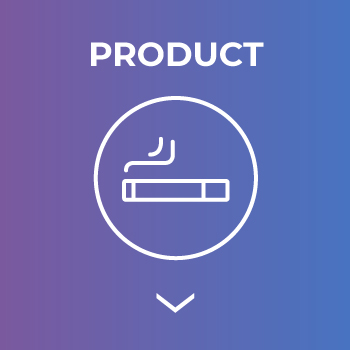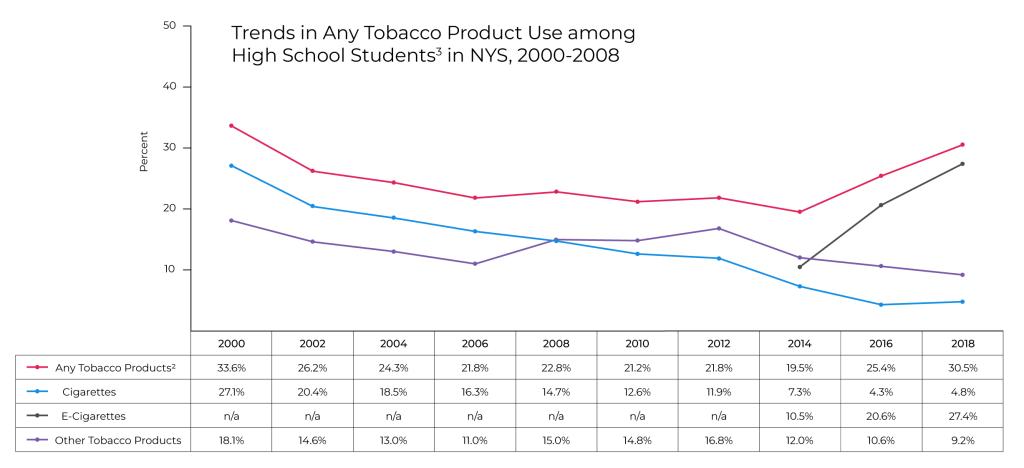Tobacco Marketing
By exposing the tobacco industry’s current marketing strategies, we can stop them in their tracks.
“From the 1950s to the present, different defendants, at different times and using different methods, have intentionally marketed to young people under the age of twenty-one in order to recruit ‘replacement smokers’ to ensure the economic future of the tobacco industry.”
—U.S. District Court Judge Gladys Kessler Final Opinion, United States v. Philip Morris
Tobacco Industry Marketing:
Making products sweet, cheap and easy to get
To successfully recruit new young smokers and keep as many current smokers as possible, tobacco companies need to keep their deadly products affordable, accessible and attractive. Understanding how they do that means taking a closer look at how they manipulate what is known as the Four P’s of marketing: Product Price, the Product itself, Promotion strategies and Place of sale.




Price
According to the Surgeon General, raising the price of tobacco products is one of the most effective strategies for preventing young people from starting, reducing the amount of tobacco used, and increasing the number of people who quit. Steps New York State has taken include having the highest state cigarette tax in the nation, sales tax on e-cigarette products (one of 23 states), and prohibiting retailers from accepting discounts and coupons for tobacco products.
Problems that remain: package size
The Food and Drug Administration requires cigarettes to be sold in pack sizes of no less than 20 which keeps the price per pack reasonably high. Other tobacco products (also known as OTPs) are not included in this regulation, leaving products such as cigars, cigarillos, smokeless tobacco, and loose tobacco to be sold at cheaper and more tempting prices such as the products pictured to the left: Swisher Sweets priced at 2 for 99¢ and the Show Cigarillos at 5 for $1.
The results are predictable; OTP use among high school students in 2018 is nearly twice as high as cigarette use as illustrated in the graph below.

Promising Practices Guide
The Promising Practices Guide was created by the Community Partnerships in order to share key learnings from our statewide initiative to reduce the amount of tobacco advertising in the retail environment. Reality Check, the state youth action program, worked collaboratively with the Community Partnerships to accomplish some aspects of this initiative.
To involve your local youth, find a local RC Coordinator
Resources
Guide Updates
Price Discounting
The tobacco industry spends billions of dollars on marketing including discounts to make tobacco products more affordable. These discounts are deadly – bringing disease and death to the people who use tobacco including more than 100,000 youth in New York State.
Youth tobacco use in New York State is still a big problem:
- 88 percent of first cigarette use will occur by the age of 18, with 98 percent of all first use by 26 years of age.
- In New York State, 11.9 percent or 107,000 high school students smoke.
- Each year, 12,900 kids under 18 become new daily smokers in New York.
The tobacco industry understands the relationship between price and consumption so it has developed strategies including coupons and multipack discounts to make tobacco products more affordable. Coupons directly reduce the price of a product at the point of sale while a multipack discount is a promotional tool that includes the sale of multiple packages or products for one price such as a buy one, get one free offer.
Price discounting undermines the impact of tobacco taxes and New York’s strong tobacco control policies. New York City has passed legislation to ban the use of coupons and multipack discounts.
To learn more or lend your support
Other New York State Initiatives
The New York State Colleges Tobacco Free Initiative (NYSCTFI) is a statewide partnership. They are dedicated to encouraging and supporting colleges and universities. Therefor creating 100% tobacco-free campus policies.
NYSTobaccoFreeColleges.org
New York State Smokers’ Quit Line is free and confidential service. They provide services to New York State residents who want to stop tobacco use. This includes, motivational coaching, free nicotine patches, an online smoke-free community, educational fact sheets, materials and videos. Additional educational tools and cessation resources are available. Mainly to healthcare providers, employers, educators, and others. In addition, this also includes a referral program for tobacco users.
NYSmokeFree.com

